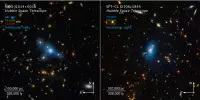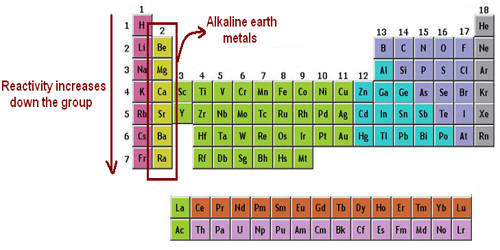A supermassive black hole lies at the heart of almost every large galaxy. An international research team recently observed the Circinus galaxy, one of the closest galaxies to the Milky Way, with high enough resolution to gain new insights into the gas flows to and from the black hole at its galactic nucleus.
An international research team led by Takuma Izumi, an assistant professor at Japan’s National Astronomical Observatory, has observed the active galactic nucleus of the Circinus Galaxy, one of the Milky Way’s closest major galaxies, in high resolution (approximately 1 light year). The observation was made possible by the Atacama Large Millimeter/Submillimeter Array (ALMA) astronomical observatory in Chile.
This is the first quantitative measurement at this scale of a nearby supermassive black hole’s gas flows and structures in all phase gases, including plasma, atomic, and molecular. Because of the high resolution, the team was able to capture the accretion flow heading towards the supermassive black hole, revealing that the accretion flow is caused by a physical mechanism known as ‘gravitational instability.’
Observations of multiphase gases can provide a more comprehensive and thorough understanding of the distribution and dynamics of matter around a black hole and our observation marks the highest resolution ever achieved for multiphase gas observations in an active galactic nucleus.
Dr. Izumi
Furthermore, the team also found that a significant portion of this accretion flow does not contribute to the growth of the black hole. Instead, most of the gas is expelled from the vicinity of the black hole as atomic or molecular outflows and returns to the gas disk to participate again in an accretion flow towards the black hole, much like how water gets recycled in a water fountain. These findings represent a crucial advancement towards a greater understanding of the growth mechanisms of supermassive black holes.
These observation results were published in Science on November 2, 2023.
‘Supermassive black holes,’ with masses exceeding a million times that of the Sun, exist at the centers of many galaxies. But astronomers have long pondered the mechanisms responsible their formation. One proposed mechanism, as outlined in previous research, suggests that gas accretes onto the black hole as it gravitates towards the center of the host galaxy.
The intense gravitational pull of supermassive black holes causes gas to accelerate as it approaches them. The increased friction between gas particles causes the gas to heat up to temperatures of several million degrees, resulting in the emission of brilliant light. The brightness of an active galactic nucleus (AGN) can sometimes exceed the combined light of all the stars in the galaxy. Surprisingly, it is thought that a portion of the gas that falls towards the black hole (accretion flow) is blown away by the immense energy of this active galactic nucleus, resulting in outflows.

Previous theoretical and observational studies have provided detailed insights into gas accretion mechanisms at scales ranging from 100,000 light-years to a few hundred light-years at the center. Gas accretion, on the other hand, occurs a few dozen light-years from the galactic center. Because of the limited spatial scale, further understanding of the accretion process has been hampered. To understand the growth of black holes quantitatively, for example, it is necessary to measure the accretion flow rate (how much gas is flowing in) and determine the amounts and types of gases (plasma, atomic gas, molecular gas) that are expelled as outflows at that small scale. Unfortunately, until now, observational understanding has not advanced significantly.
“Observations of multiphase gases can provide a more comprehensive and thorough understanding of the distribution and dynamics of matter around a black hole and our observation marks the highest resolution ever achieved for multiphase gas observations in an active galactic nucleus,” points out Izumi.
For the first time, Izumi and his colleagues observed the accretion flow towards the supermassive black hole within the high-density gas disk that extends several light-years from the galactic center. Because of the small scale of the region and the complex motions of gas near the galactic center, identifying this accretion flow had long been difficult. The research team did, however, pinpoint the location where the foreground molecular gas was absorbing light from the brightly shining active galactic nucleus in the background. This absorbing material is moving away from Earth, according to detailed analysis. As the absorbing material consistently resides between the active galactic nucleus and Earth, this indicates that the team has successfully captured the accretion flow heading toward the active galactic nucleus.
The study also elucidated the physical mechanism responsible for inducing this gas accretion. The observed gas disk exhibited a gravitational force so substantial that it could not be sustained by the pressure calculated from the gas disk’s motion. When this situation occurs, the gas disk collapses under its own weight, forming complex structures and losing its ability to maintain stable motion at the galactic center. Consequently, the gas rapidly falls towards the central black hole, A phenomenon known as “gravitational instability” at the heart of the galaxy.
Furthermore, the research improved our quantitative understanding of gas flows around active galactic nuclei. The researchers calculated the rate at which gas is supplied to the black hole by taking the density of the observed gas and the velocity of the accretion flow into account. Surprisingly, this rate was discovered to be 30 times greater than what is required to keep the active galactic nucleus active. In other words, the vast majority of the accretion flow at the 1-light-year scale around the galactic center was not contributing to the black hole’s growth.
So, where did this surplus gas go? High-sensitivity observations of all phase gases with ALMA detected outflows from the active galactic nucleus. Quantitative analysis revealed that the majority of the gas flowing toward the black hole was expelled as atomic or molecular outflows. However, due to their slow velocities, they couldn’t escape the gravitational pull of the black hole and eventually returned to the gas disk. There, they were recycled into an accretion flow toward the black hole, completing a fascinating gas recycling process at the galactic center.
In reflecting on his accomplishments, Takuma Izumi says, “Detecting accretion flows and outflows in a region just a few light-years around the actively growing supermassive black hole, particularly in a multiphase gas, and even deciphering the accretion mechanism itself, are monumental achievements in the quest to reveal more about supermassive black holes. To gain a comprehensive understanding of the growth of supermassive black holes in cosmic history, it is essential to investigate various types of supermassive black holes that are located farther away from us,” he continues. This necessitates high-resolution and high-sensitivity observations, and we have high hopes for the continued use of ALMA as well as future large radio interferometers.”
















